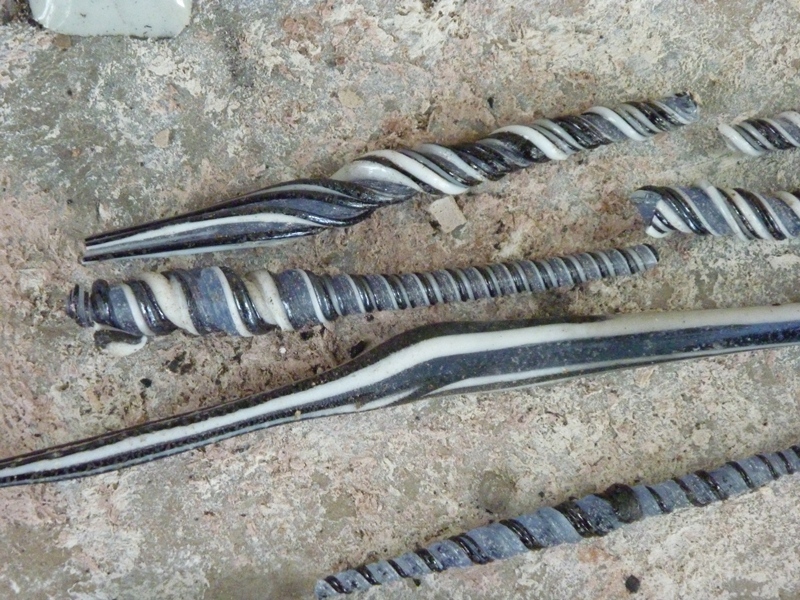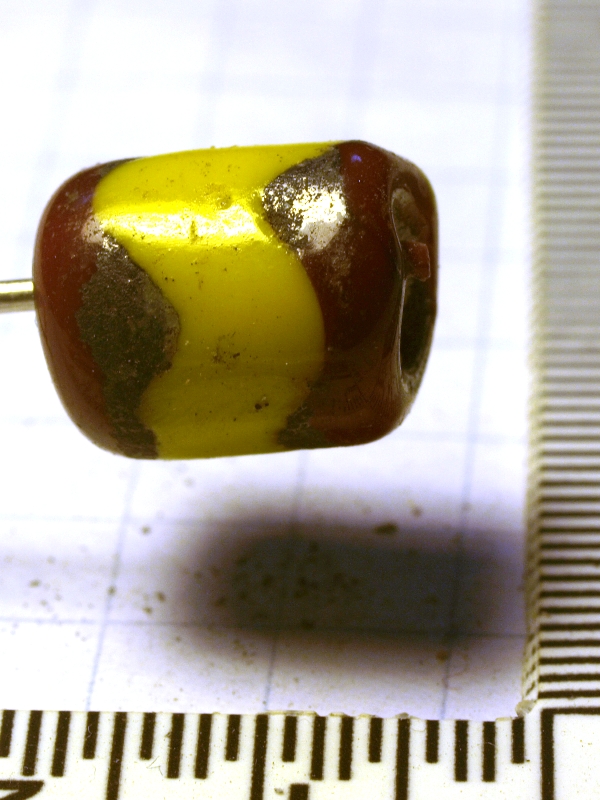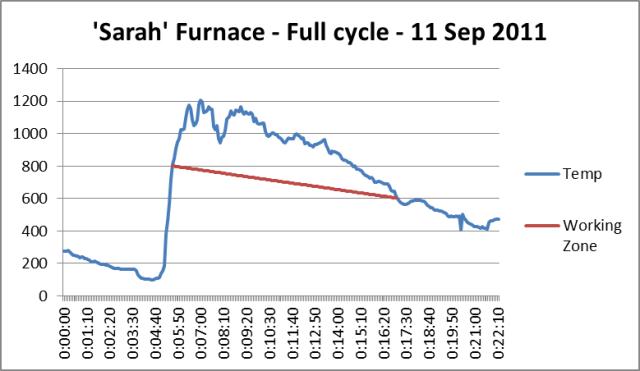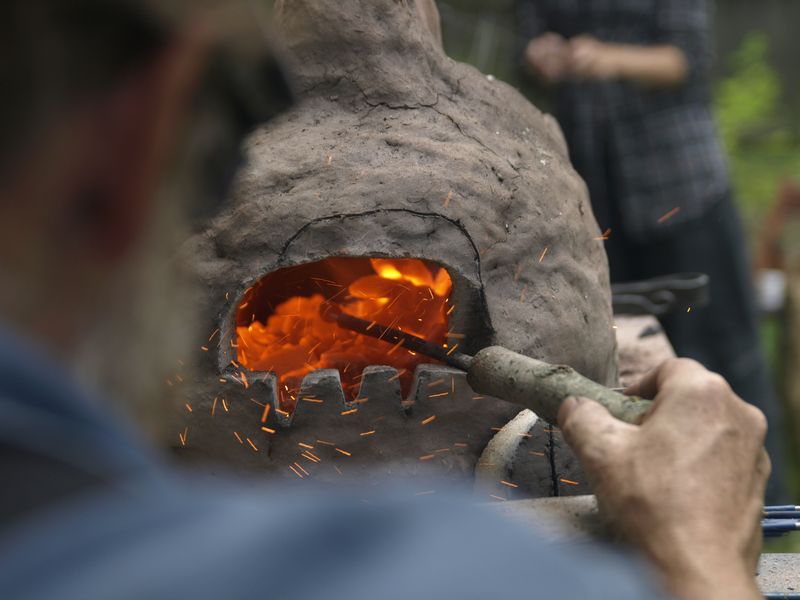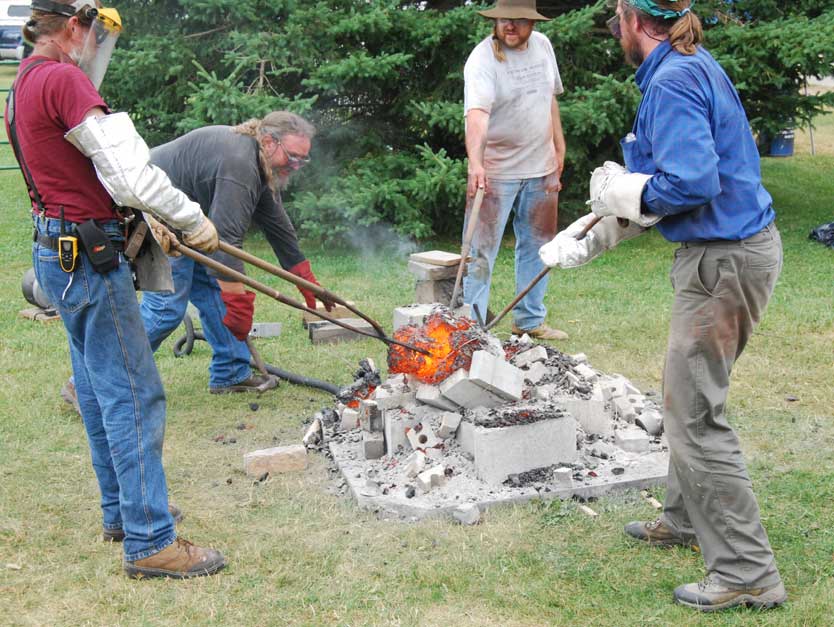'Celtic Iron Age' slag pit furnace
October 9, 2011
DARC smelt team
(Darrell / Neil / Marcus)

Showing the initial layout of the 'pit'. A standard 20 L plastic pail was surrounded by dirt, then filled to top with cut willow branches (about 0.5 - 1 cm diameter). Use of concrete blocks would allow for easy excavation after the experiment.

Our standard short shaft furnace is constructed on top of the pit. Clay with straw cobb, 25 cm ID, 70 cm tall. Ceramic tube tuyere (2.5 cm ID), electric blower.
Total time : 5 3/4 hours
Total charcoal : 57.5 kg
Total ore : 48 kg

Slag block as excavated (furnace itself was removed in one piece and retained for further use) There was no actual bloom recovered!

A fragment of the slag block, showing how hot slag had dripped down between the sticks, solidified, the heat converting the wood to charcoal. This from the front side of the furnace, indicating lack of iron (pale green colour). Slag to the rear of the furnace was a black iron rich colour.
The purity of the ore was questionable.
There is a chance some iron may exist trapped inside the slag block. A check with a magnet at the usual location (under the tuyere) did not indicate any however.
It is possible that the existing iron rich slag might be recovered, then utilized in a second smelt attempt.
For now we want to retain the slag block itself as a sample.

The extracted slag block. In this shot the tuyere is located to the upper right, directly above the scale vertical line. The colour shift in the slag from the rear to the front of the furnace is easily seen. There is an extra bulge in the slag about at ground level (the clay furnace sat directly on the loose dirt here.
A full report is in the works!
(duplicate from Hammered Out Bits)
